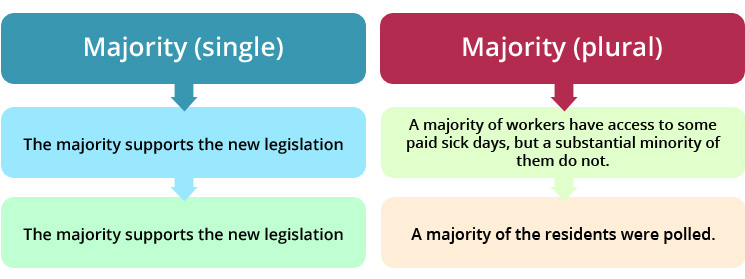Understanding the Usage of “Majority”

Like an indivisible nucleus at the center of an atom, the subject-verb pair unifies the sentence. It can be surrounded by any number of modifying words, taking on new shades of meaning. But no matter how many adjectives, adverbs, and independent clauses become attached, the basic unit remains. The subject-verb pair guarantees that the sentence means something. Indeed, a sentence only becomes complete when it contains at least a subject and a verb.
However, subject-verb agreement, though seemingly complex, is quite easy to grasp once you parse the sentence and break it down to its components to understand the intended meaning. A common confusion arises with collective terms, such as committee, majority, etc.
“Majority” is a collective noun, and collective nouns can be either singular or plural, depending on whether you’re talking about a group of individuals or the individuals in the group.

In the sentence: “A majority of workers have access to some paid sick days but a substantial minority of them do not,” “majority” has been disbanded as a single unit and the situation of several workers within that unit is being spoken about. Hence, the subject (a majority of workers) takes a plural verb (have access).
Again, in the sentence: “The majority supports the new legislation,” the majority is being treated as a single unit (as they are not divided in their opinion regarding the new legislation) and the subject (the majority) takes a singular verb (supports).
Subject-verb agreements may seem baffling at certain points of time. However, the key to accuracy in such cases is to pinpoint the noun and its number and choose the verb accordingly.








